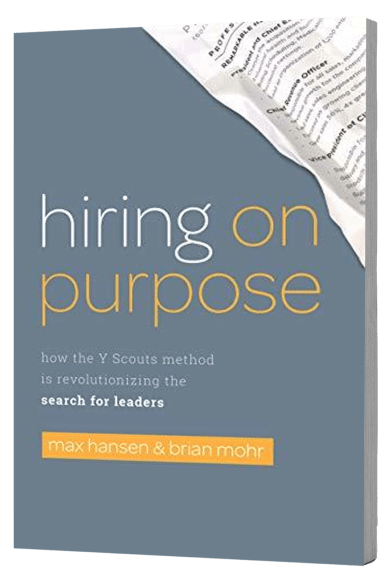If you want to propel your business forward, you’ll need cohesive and complementary relationships within your leadership team. In fact, for the most progressive companies, one of the six key components of the popular EOS Model is people, i.e., placing the right people in the right seats. Visionary and integrator are among several management styles in favor right now, whether you adhere to the EOS model or not, and they deserve special mention because when paired together correctly, they form a dynamic duo. This path to cohesion, however, can be challenging.
Here’s what you need to know about these styles, how they work, and what visionaries and integrators can do to create powerful synergies in the leadership team.
Table of Contents
ToggleVisionary and Integrator
Visionary leaders tend to create big news, dominating the headlines with their gilded companies and gee-whiz technologies. They are the proteges and wunderkinds of modern day business, discerning future possibilities from seemingly improbable dreams. Think Tesla’s Elon Musk, Amazon’s Jeff Besos and Google’s Marissa Mayer. They pioneer industries, disrupt markets and help us reimagine how we live, work and purchase goods and services.
And then there are the integrators. These often unsung heroes are the wizards behind the curtain, making impossible dreams a reality. Integrators are focused on execution, i.e., aligning strategy with daily operations. Integrators keep the company accountable for output and follow-through. In a word: execution. Because let’s face it, all it takes is a bit of unfettered imagination to come up with a big idea. But when it’s time to launch these ideas, you’ll need to step away from the whiteboard and do some stuff.
Certainly, there are visionaries who can execute — if they must. But the two styles are fundamentally different. When you’re a visionary, it’s difficult to come down from the 40,000-foot-level. The day-to-day? That’s for other people. And it should be.
Execution is where the integrator shines. Facebook’s future would be a lot less rosy without Sheryl Sandberg. The iPhone might be less relevant sans Tim Cook. And if it weren’t for Fred Turner, there would be no Chicken McNuggets. More importantly though, it was the seldom-mentioned Turner who developed, arguably, the most rigorous food service operating system in modern history, catapulting McDonald’s to world preeminence. They were all integrators.
How Different Are They? Visionary vs. Integrator
The challenge, however, is to find the right combination of visionaries and integrators who can work together in spite of their markedly different perspectives. Following is a rundown of the strengths and challenges of each:
Visionary Strengths and Challenges
Visionaries have big ideas. They may likely be company founders and generally have the following characteristics:
- Innovative: They have creative ideas and love to think outside the box.
- Big-picture-oriented: They see the world at the 40,000-foot-level.
- Communicative: They passionately convey their ideas to others.
- Charismatic: They have an enthusiasm for their work that others find magnetic.
- Risk tolerant: They embrace risks as part of the price of innovation.
- Persistent: They exhibit dogged determination and are resilient in the face of challenges.
- Intense: They maintain laser focus on the vision.
- Team-centered: They surround themselves with a team.
Visionaries may need to develop the following traits:
- Emotional intelligence: The ability to understand and manage one’s emotions in positive ways, as well as the ability to recognize the emotions of others.
- Organizational skills: The ability to structure the environment for efficiency.
- Collaboration: The ability to work well with others, share credit and balance weaknesses within a team.
- Clear communication: The ability to convey information with clarity, consistency and frequency.
Integrator Strengths and Challenges
On the other hand, integrators are detailed-oriented doers. They are the people asking the question: “Who will do what by when?” These executors generally exhibit the following characteristics:
- Relationship-centered: They value relationships and prioritize the well-being of others.
- Problem solvers: They are able to identify issues, define the root cause and determine solutions.
- Organizers: They effectively structure the organization to place the right people in the right roles.
- Emotionally stable: They maintain an even disposition.
- Risk mitigators: They anticipate risk and find strategies to eliminate or contain the damage.
- Consensus-builders: They practice empathy and understand how to foster agreement.
- Nonconfrontational: They avoid conflict through diplomacy and collaboration.
Integrators may need to develop the following skills:
- Decisiveness: The ability to make decisions outside of committee consensus and with imperfect information.
- Collaboration: The ability to truly engage others in creating a solution rather than simply voting.
- Big-picture view: The ability to grasp the long-term perspective even while fighting daily fires.
Since visionaries and integrators are motivated in different ways, it is critical for both leaders to understand the defining characteristics of the other. This is one way in which they can start to build mutual trust.
Learn more about visionary and realist leadership styles!
Productive Conflict in Your Leadership Team
Companies that can successfully bring these two leadership styles together have an advantage over those who cannot. Differences in opinion, however, can create conflict. That’s not a bad thing.
Productive conflict is actually necessary for progressive leadership teams. Diverse opinions drive innovation and support strategic decision-making. Many people don’t enjoy conflict. Integrators in particular, who cultivate strong working relationships, do not relish being at odds with others. Visionaries may not recognize that what they view as a lively discussion may leave integrators feeling unsettled and unheard.
The best way to manage conflict is to establish ground rules to help navigate controversial exchanges. When leaders learn to recognize and respect the differences in their styles, it becomes easier to handle conflict.
How To Find an Integrator To Complement a Visionary
Whether you are a young startup, a well-established business or a unicorn, it’s likely that you have a leadership style that dominates the culture. Although it may be tempting to keep hiring the same type of managers, the companies that will sustain future viability will embrace diverse leadership teams. Diversity isn’t just about gender, ethnicity or background. It also means that your leaders exhibit a range of decision-making styles and problem-solving abilities that can be critical to your future success.
At Y Scouts, our Three Uniques help you pursue the best possible hiring outcomes, allowing you to discover candidates who closely align with your unique culture and values. With Role Visioning, we work with you to define how success looks for a specific role, using three to five success outcomes that capture the most salient responsibilities. Beyond a basic job description, we build proof points into our search processes. After all, anyone can tailor a resume to fit a laundry list of competencies. And there are lots of highly skilled people out there. But you need the right highly skilled person. We can help mitigate the hiring risk and greatly increase your executive search outcomes. Right people, right role.
Make Your Interviews Count
If you have a visionary founder (or two), you’ll need an integrator. In your executive search process, proactively seek candidates who can add some tension to your company. During interviews, provide candidates the opportunity to demonstrate the skills and capabilities they possess.
Use business cases and behavioral interview questions. The most successful integrators must have the strength of conviction to hold their own with a dominant visionary. They must also be willing to listen and press for greater understanding. You’ll want to discover how they:
- Manage conflict among various approaches.
- Foster and use collaboration.
- Solve logistical or other operational challenges.
- Work with diverse teams to reach a consensus.
- Interpret the current competitive environment.
- Incorporate strategy into day-to-day operations.
Pay particular attention to your potential leader’s comprehension of the broader implications of your business model. For example, IKEA isn’t just a really big furniture store. Rather, its mission is to “create better everyday life for the many people,” underscoring the company’s commitment to low cost and accessibility. This understanding drives an operating model that is significantly different from that of a super-sized peddler of household goods.
Visionary and Integrator Together
Visionaries and integrators must work closely together, especially for the first 90 days. Although the partnership can be challenging, the rewards are well worth the investment. The best businesses don’t just happen. The cohesion of your leadership team, the so-called soft skills, require work. But over time, with mutual respect and a vision toward the future, trust will continue to grow.
It helps to have an objective viewpoint when you are hiring leaders for a growing company. Insiders may not have the perspective necessary to identify the skills needed for your next phase or to identify the most complementary fit. At Y Scouts, our executive search process will help you hire on purpose, finding the leadership style you need for the future.



